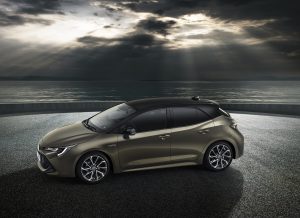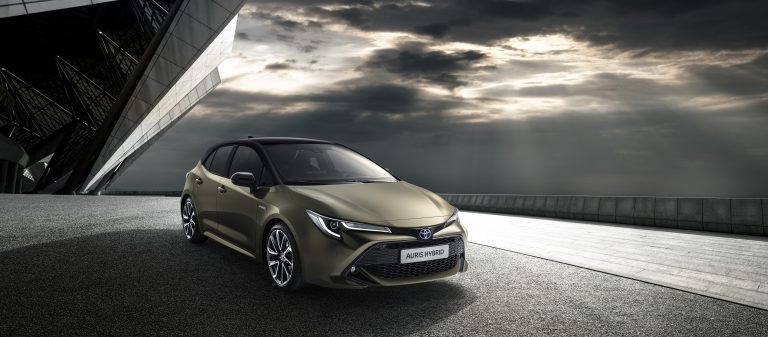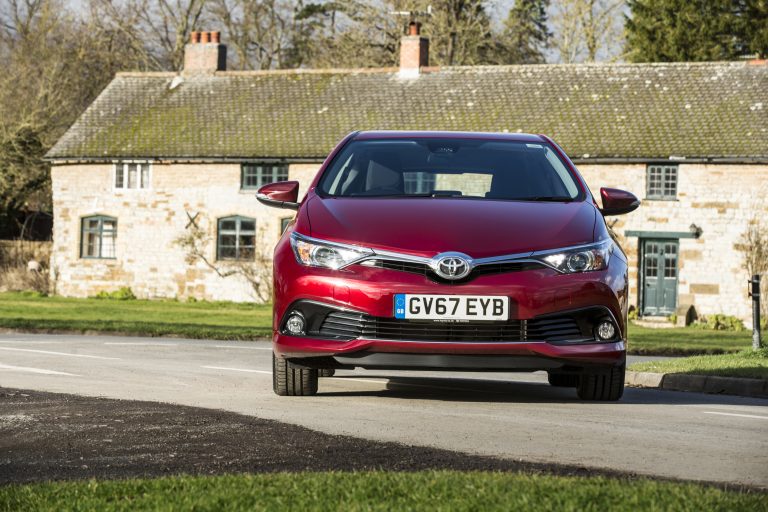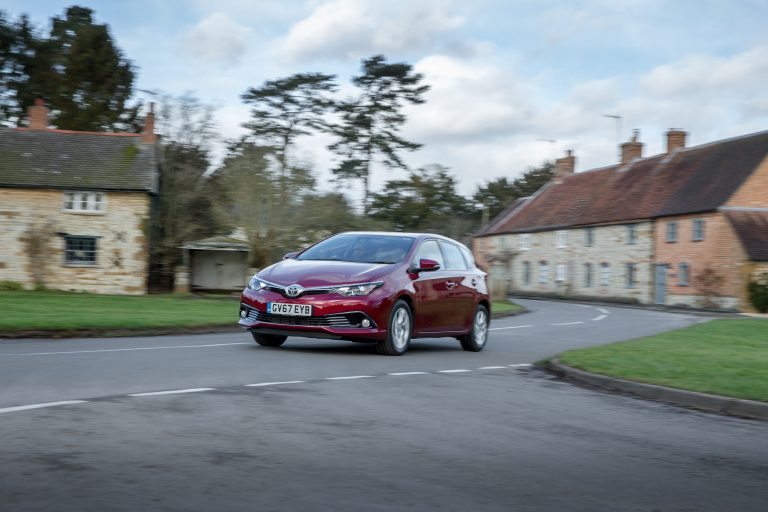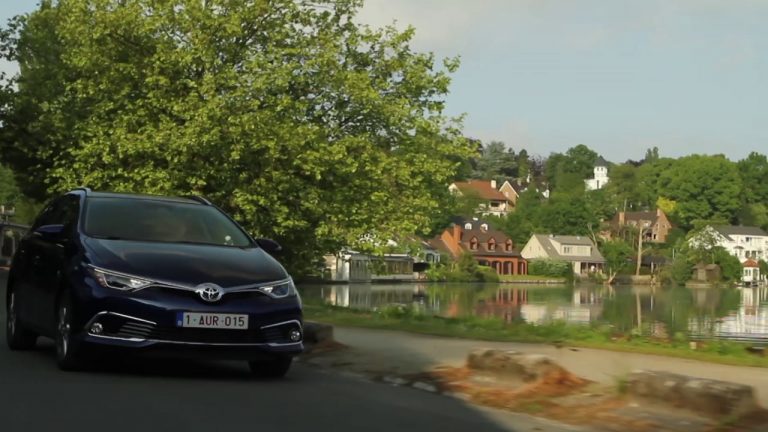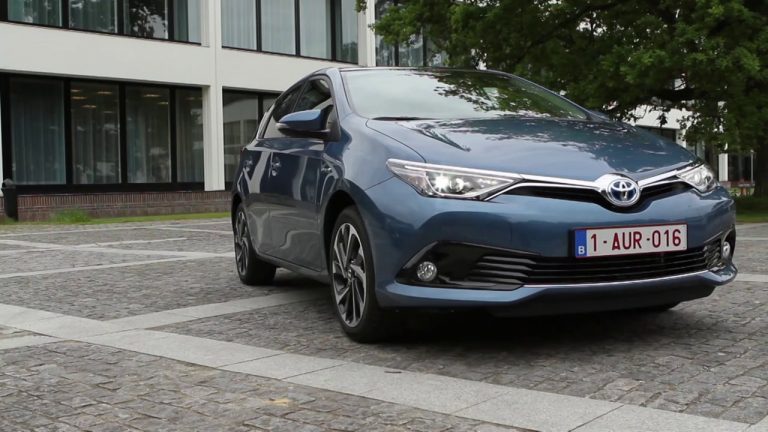The New Toyota Auris
A New, Additional, Hybrid Electric Powertrain Option and a More Dynamic Design
The new, third-generation Toyota Auris makes its world debut at the 2018 Geneva Motor Show, sporting a more dynamic design and offering the option of a brand new 2.0-litre full hybrid electric system in its powertrain line-up, marking the start of Toyota’s dual hybrid strategy.
Toyota has always prided itself on listening to its customers and responding to their feedback. In particular, after 20 years of hybrid leadership and more than 11 million global sales, including more than 1.5 million hybrid vehicles in Europe, the company has been keen to learn from them how it can further improve its technology and make it more attractive to more people.
This experience has helped prompt Toyota to offer its core models with a choice of two hybrid electric powertrains: one providing the traditional benefits of fuel efficiency and a relaxing drive; the second building on these strengths with greater power and more dynamic driving characteristics.
As announced by Toyota Motor Europe on 28 February, Toyota Manufacturing UK’s Burnaston plant will be the exclusive centre for European new Auris production, with TMUK’s Deeside factory supplying the majority of engines for the model. This announcement follows the investment of £240 million at Burnaston to prepare and equip the plant for Toyota New Global Architecture (TNGA) manufacturing.
In 2010, the first generation Auris became the first high-volume, core Toyota model in Europe to benefit from hybrid drive; now it will be the first core model in the region to offer a choice of hybrid electric powertrains.
The current Auris powertrain line-up consists of five conventional engines and one hybrid powertrain. However, reflecting the brand’s continued focus on hybrid technology, the new Auris will offer customers just one conventional engine – a 1.2 litre turbo petrol unit – and a choice of 120bhp, 1.8 litre or 177bhp, 2.0 litre hybrid electric powertrains.
The 1.8 litre system fulfils all the requirements that customers have come to expect from a Toyota full hybrid electric powertrain: silent, intuitive, responsive and self-sufficient EV technology with low cost of ownership, no need for plug-in recharging, excellent fuel economy, low CO2 emissions, and up to 50 per cent all-electric driving in everyday commuting.
The 2.0 litre system maintains these benefits and takes full advantage of the added ride comfort, stability, handling and driving enjoyment inherent in the new Auris’s Toyota New Global Architecture (TNGA) platform. It will offer drivers an ‘energised drive,’ with more power and steering wheel-mounted shift paddles for a more dynamic, engaging driving experience.
Toyota New Global Architecture (TNGA)
Toyota New Global Architecture (TNGA) represents the foundation for all of Toyota’s future powertrain and vehicle development. It marks a revolution in the way the company designs, engineers and manufactures vehicles, and is integral to the company’s mission to build ever better cars that are more stylish, more enjoyable to drive and even safer.
TNGA introduces new, defined guidelines for the positioning of different state-of-the-art components, which simplifies vehicle design in key areas. The impact of this approach is on items that are largely out of sight, so designers still had the freedom to give the new Auris a visually distinctive and individual look with a lower stance and more appealing proportions.
The new Auris’ TNGA platform guarantees a more rewarding driving experience thanks to a low centre of gravity, multi-link rear suspension, and a more rigid body shell through the use of high strength steel reinforcement in key areas. All these factors contribute to better handling and stability without compromising ride and comfort.
All Toyota’s new TNGA-based vehicles prioritise the highest active and passive safety standards. The new Auris is designed to meet the exacting standards of independent crash testing programmes and provide increased safety levels through the sophisticated functions and systems of the latest Toyota Safety Sense technology.
Design
“Our primary goal with the new Auris was to create the most bold and dynamic hatchback on the market, without compromising interior usability,’” said Simon Humphries, Executive General Manager, Toyota Global Design.
“Harnessing the low centre of gravity afforded by the TNGA layout, the vehicle is light and agile in the side view, yet as we move to the rear, the architecture transforms to create a solid, wide and low stance that is absolutely critical for the European market.”
Longer and lower than its predecessor, the new Auris adopts a significantly more dynamic design and more striking frontal styling. Overall length has increased by 40mm, all of which is contained within a longer wheelbase. Importantly, the overall height has been reduced by 25mm, while the cowl height is significantly (-47mm) lower than in the current model. The result is a sleeker shape and a more attractive, lower bonnet, which in turn improves safety by giving the driver a clearer forward view.
The new frontal styling is a further evolution of Toyota’s current design philosophies. Beneath the curved front edge of a flatter, clamshell bonnet, the narrow upper grille incorporates a central Toyota emblem and, at its extremities, new, all-LED headlight units with integral daytime running lights.
The frame of the large, trapezoidal lower grille projects powerfully forward of the bonnet’s front edge and the upper grille in a pronounced step, and is less pointed and more vertical than before. This results in a 20mm reduction in the vehicle’s front overhang.
The sides of the grille surround generate a catamaran hull shape at the front corners of the car, following a design principle that was also applied to the new Toyota Yaris. This emphasises the vehicle’s 30mm increase in width and its broad, sporting stance.
Beneath the grille, the frame divides to clearly define the lip of a front spoiler. The edges of the spoiler are angled upwards, creating an area which houses the LED fog lights. The grille’s mesh itself has a new, more articulate and refined design than the classic honeycomb finish.
The rear of the car is more rounded in plan form, strengthening the visual relationship between the front and rear of the vehicle. A 14-degree increase in the rake of the rear screen and a muscular hip above the rear wheel arch combine to make the overall appearance more compact, despite a 20mm increase in the rear overhang. A roof spoiler is fitted as standard on all model grades.
The rear all-LED lamp clusters feature light guides which emphasise the new Auris’s wide, planted stance. And the rear bumper styling echoes the frontal design cues and features a thin lower lip incorporating twin chrome inserts.
The new Auris’s design can be further emphasised with an optional bi-tone colour scheme, which combines the body colour with a black finish to the roof and pillars.




